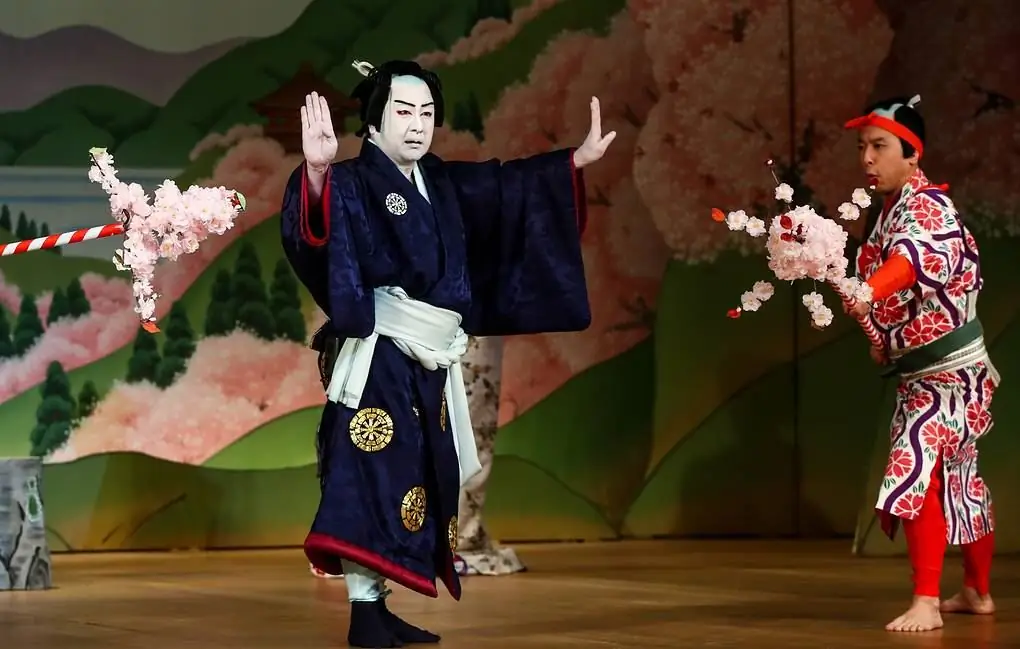- Author Antonio Harrison [email protected].
- Public 2023-12-16 07:44.
- Last modified 2025-01-22 21:44.
Kabuki is a famous Japanese theater, which, even 500 years after its creation, is an amazing synthesis of mise-en-scène, dance and music. It is one of the oldest traditional theaters in the world.

History of appearance
Kabuki theater was created in the early 17th century by a group of women led by the dancer Izumo no Okuni. Its name translates to deviate. Kabuki was indeed strikingly different from other theaters. His choreography is a combination of folk and ritual dances. They alternate with instructive scenes from everyday life and represent a parody of theater performances but also variations on themes from popular songs.

The new art form quickly became popular in the big cities of Japan and soon became famous throughout the country. Unlike noh theater, intended for an aristocratic and refined audience, kabuki was originally a folk theater, somewhat similar to a European music hall. He later received recognition from nobles and samurai.
In 1629, the Japanese authorities, who considered kabuki performances immoral, banned women from performing on stage. So they were replaced by men. Even now, with rare exceptions, they perform all female roles.
In the middle of the 18th century, kabuki theater increasingly began to borrow the repertoire of the Japanese joruri puppet theater. The actors even tried to imitate the play of the puppets.
Scene features
The premises of kabuki theaters have a very complex structure. Although the stage is not decorated, it has many technical features. Unlike the noh theater, kabuki is characterized by: a passage connecting the hall with the stage, as well as hatches from which mystical creatures suddenly appear. The surface of the stage is covered with a special material that emphasizes the sound of steps during the dance and allows the actors to move better.

Actors
All roles are played by men. They go on stage in a very complex make-up, which deliberately emphasizes the temperament of the hero, and bright costumes. Sometimes one actor plays several roles at once in one production. Aces of their craft can combine more than ten roles. To do this, they learn the art of quickly changing clothes.

Performances
In kabuki, they stage classical performances about the life of the Japanese nobility. Also in the theater they like “family dramas”, where a person from the people is in the center of the plot. An integral part of kabuki performances is dance, which has nothing to do with classical Western ballet. The dances of the kabuki actors sometimes resemble the convulsions of a person lying on the ground.

Along with dance, stage music is of great importance. It plays the role of sound scenery, reproducing the sound of waves, wind, rain, etc. on the stage. A number of instruments are involved in the performances: flute, different types of drums, gong, bell and others.






